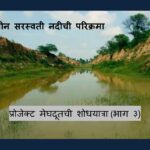CCS’ study report published in Times of India
Swati Shinde Gole | TNN | Updated: Jun 19, 2019, 6:43 IST
The number of fireflies seen in the forest in May was distinctly low
PUNE: Absence of pre-monsoon showers has had a major impact on fauna in the jungles of Radhanagri and Amba in Kolhapur, Bhorgiri in Pune and Bhandardara in Ahmednagar, a study conducted by the city-based Centre for Citizen Science (CCS) has found.
The CCS team, which had been studying the Sahyadri ranges as part of a project since the past few years, said that these regions experienced rainfall between 25mm and 70mm in May. This year, the rainfall was zero, which has had an impact on fauna.
For example, the members observed that insects mostly seen in the forest regions of Sahyadri ranges in May after the first showers were missing this year. The number of fireflies seen in the forest in May was distinctly low, but increased in the second week of June.
Mitali Inamdar of CCAS said, “The large number of fireflies noticed at the end of May and also the insects seen after the first showers are now seen in the second week of June. This has impacted animals that depend on these insects for food,” she said.
Narrating a rare incident, Inamdar said, “During our visit to Bhandardara, we saw a common krait snake eating a dead frog on the road. This snake commonly eats other snakes. However, due to unavailability of food or prey, the snake was forced to eat the dead frog.” In the last two-three years, the CCS team had recorded an average rainfall of 60.7mm in Radhanagri, 69.8mm at Amba, 33.2mm at Bhorgiri, and 22mm in Bhandardara in May.
The CCS members observed that it was once quite common to see frogs coming out at night before the monsoon, but now it has become rare. Even sounds of night insects were hard to come by. According to senior zoologist Hemant Ghate, “Pre-monsoon shower is important for the growth of insects. Due to these showers, water is available and also the temperature comes down. Some insects are seen when the right temperature sets in for them after the showers. There needs to be a detailed study on the relation between fireflies and monsoon.”
Sachin Punekar, biodiversity expert, said that many small and medium ponds and water reserves in Sahyadri have dried up due to lack of rains. Due to no rains in May, insects and frogs were unable to lay eggs. The little ones that come out of the eggs require large amount of food but due to lack of water, there was a major dearth of food. The situation has a cascading effect on the food cycle of insects and animals that are dependent on these insects.”
—









Leave a Reply